Organic gardening: expert guide on how to garden naturally
Follow our top tips on organic gardening and discover how to create a plot that's kinder to the environment
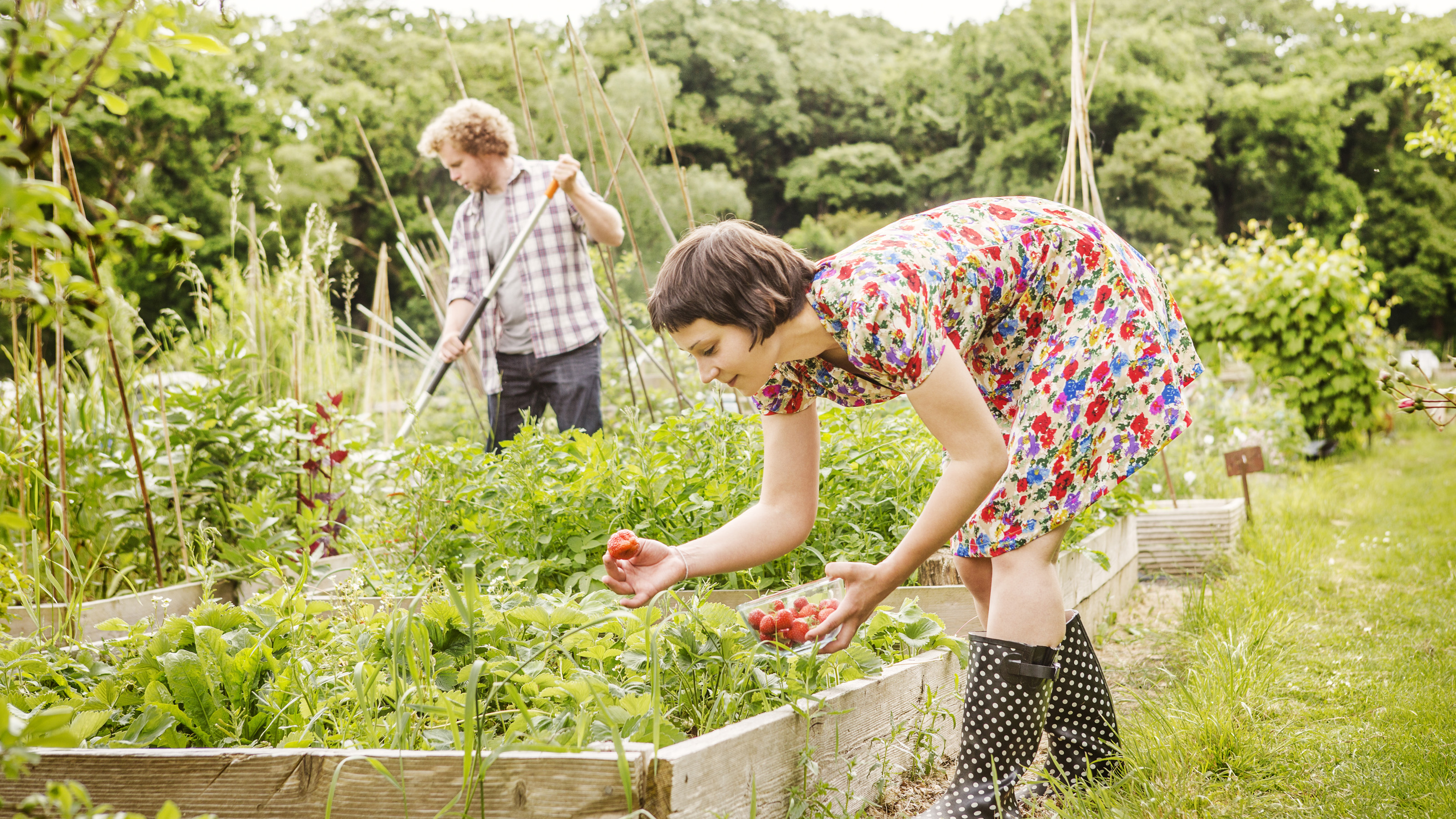

Interested in learning more about organic gardening to discover how you can do your bit for the environment? We're here to help. In an effort to reduce the amount of artificial and potentially damaging nasties we eat, an ever-increasing number of us around the world are buying organic produce as part of our weekly shop. So for those of us who garden too, it’s a logical next step to look at a more natural way of doing that as well.
If we no longer want farmers to spray our crops with potentially harmful pesticides and fertilizers, why would we want to treat our own home-grown flowers, fruit and veg with them?
But where should you start and how easy is it make the switch to organic gardening? We've put together an expert guide to answer your queries. So whether you're a beginner who is keen to find out about organic garden design ideas or an experienced gardener interested in switching to more organic gardening methods, our guide has plenty to inspire.
What is organic gardening?

Organic gardening means, quite simply, growing plants without the use of synthetic chemicals. By working with nature rather than trying to bend it to your will by spraying to kill things off and by feeding artificially to encourage growth and flowering, the garden starts to protect itself and plants begin to thrive with minimal intervention. Every aspect of a garden can be managed organically: flowers, trees, shrubs and lawns as well as vegetables, fruit and herbs, containers and window boxes, and you can do it wherever in the world you live and whatever sort of outdoor space you have.
In the UK, one of the most well-known advocates of organic gardening is TV personality Alan Titchmarsh. 'The idea is to work with the strengths and characteristics of your garden rather than against them, choosing plants that are suitable for your particular conditions, and avoiding growing anything that requires artificial help to keep it healthy,’ he says. ‘I am passionate about organic gardening myself and have been doing it for more than 30 years. As a result I now have a garden teeming with wildlife, and the build-up of beneficial insects that have been allowed to thrive thanks to the lack of chemical intervention makes epidemics of any one pest unlikely.’
It’s not just UK gardeners who are passionate about organic gardening. Jo-Ellen Meyers Sharp, president of GardenComm in the USA, is a well-known speaker on gardening matters in the States and has been an organic gardener herself for many years. ‘There is tremendous interest in it here now,’ she says, ‘especially for the beginners who came to gardening during the pandemic last year. I do it because I want to know what my plants have been treated with. The main challenge is learning patience to allow Mother Nature to do her thing, especially when you see a plant with insect damage.’
It’s the same story in Australia. ‘Our national broadcaster produces a very popular weekly gardening show called Gardening Australia and it’s all about growing organically,’ says the show’s former presenter Stephen Ryan, who now hosts YouTube channel The Horti-Culturalists. ‘My own one-acre garden is completely organic. We don’t have any green waste leaving it and I even import more - green scraps from the local supermarket and used coffee grounds from a café. All our grey and black water go through a worm composting toilet system too, so that in fact nothing organic at all leaves the premises!’
Why is organic gardening important?

As well as the potential health benefits to you and your family of cutting out the use of chemicals, by gardening organically you are doing your bit to protect the environment as a whole too. Garden Organic, an organization that provides practical advice for organic growers, puts it very simply: ‘The best option to protect our food supplies, environment, health and wellbeing,’ they say, ‘is to use organic growing methods.’
Although most domestic gardens are relatively small, there are estimated to be around 15 million of them in the UK alone. Add them all together and you are talking about a significant amount of land – if even half of that land was cared for organically, it would potentially create a hugely improved environment for humans, for wildlife garden ideas and for the plants themselves.
And if a large proportion of the gardens all around the world were also managed organically, imagine what a massive beneficial impact that could have.
How can I start an organic garden?
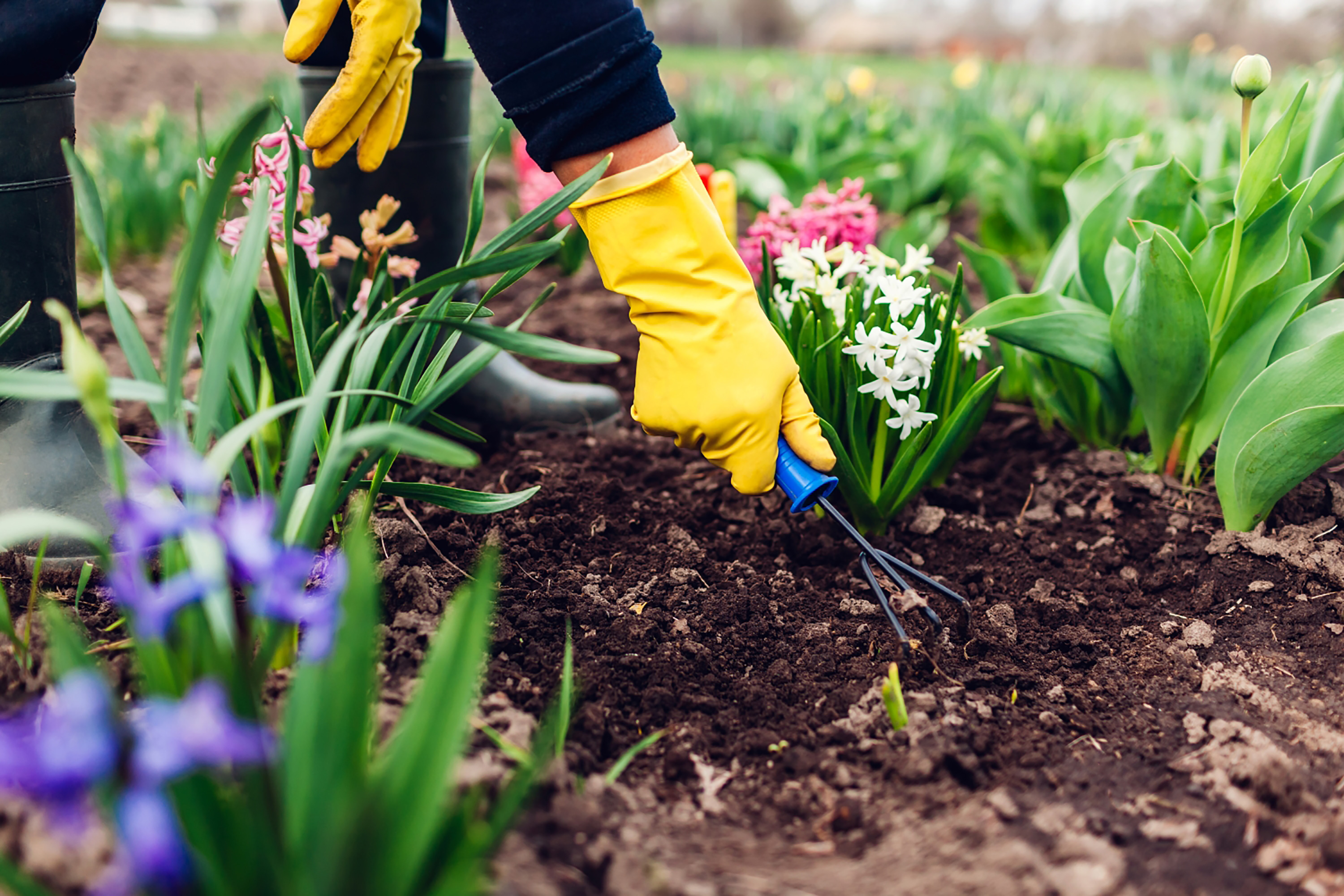
Any kind of garden is suitable for organic gardening, and it doesn’t require any tools other than those you’d use for conventional gardening. With a little planning, it won’t take up much more time than you already spend on the garden either.
The first step towards organic gardening is to establish what kind of soil you have, and our guide to soil types is a great place to start with that. Different plants prefer different soil conditions, and the best way to grow them with minimum intervention is to plant those likely to be happy in your garden. There’s no point struggling to grow acid-loving plants like rhododendrons and azaleas, for example, if your soil is alkaline. You can buy an inexpensive pH tester from garden centers to check whether your soil is acid or alkaline.
As well as often preferring a particular soil type, plants can be fussy about other growing conditions too. So assess the different areas of your garden – which flowerbed ideas will work best in a shady area or one that gets full sun, which parts of the your garden are dry and which are a little boggy? Then choose your plants accordingly.
How do I control pests and diseases if I garden organically?

This is often the biggest concern for anyone considering organic gardening, especially if they’re used to reaching for the pesticide spray at the first hint of a black fly invasion. But the best way to tackle disease in the garden without using chemicals is to avoid the problem in the first place.
Look after your plants well from the start, choose varieties that are known to be particularly resistant to disease, and only opt for those that are suited to your particular soil and situation, and you’ll give yourself a fighting chance of maintaining a thriving garden without needing to resort to chemicals.
‘Although every plant has its pest, every pest has its predator,’ says Alan Titchmarsh. ‘So organic gardeners encourage insect-eating birds by planting shrubs and trees to provide food and nesting sites. And adding a pond brings in pest-eating toads and newts too.’ Head over to our guide on how to build a garden pond for inspiration.

The average pair of blue tits will collect up to 15,000 caterpillars for their young in spring, so they are definitely to be looked on as the organic gardener’s friend! Conifers and fast-growing clematis are good choices to encourage them to nest, and holly and mahonia will provide them with a plentiful supply of berries. You can find out more tips on how to attract birds into your garden in our guide.
Ladybirds and hoverflies are the best control for aphids like greenfly and black fly - Limnanthes douglasii and Convolvulus tricolor are easy to grow in most climates and will encourage them into your garden.
Old-fashioned methods like spraying aphids with soft soap and water from a household mist spray (the kind you use when you’re ironing), placing half a grapefruit filled with beer in the border to trap slugs, or simply picking pests off with your fingers and crushing them (if you can bear to) work well. Slugs can be discouraged with barriers of salt or pine needles around susceptible plants too. There's more tips on how to get rid of slugs in the garden in our guide.
What are the benefits of companion planting for organic gardening?
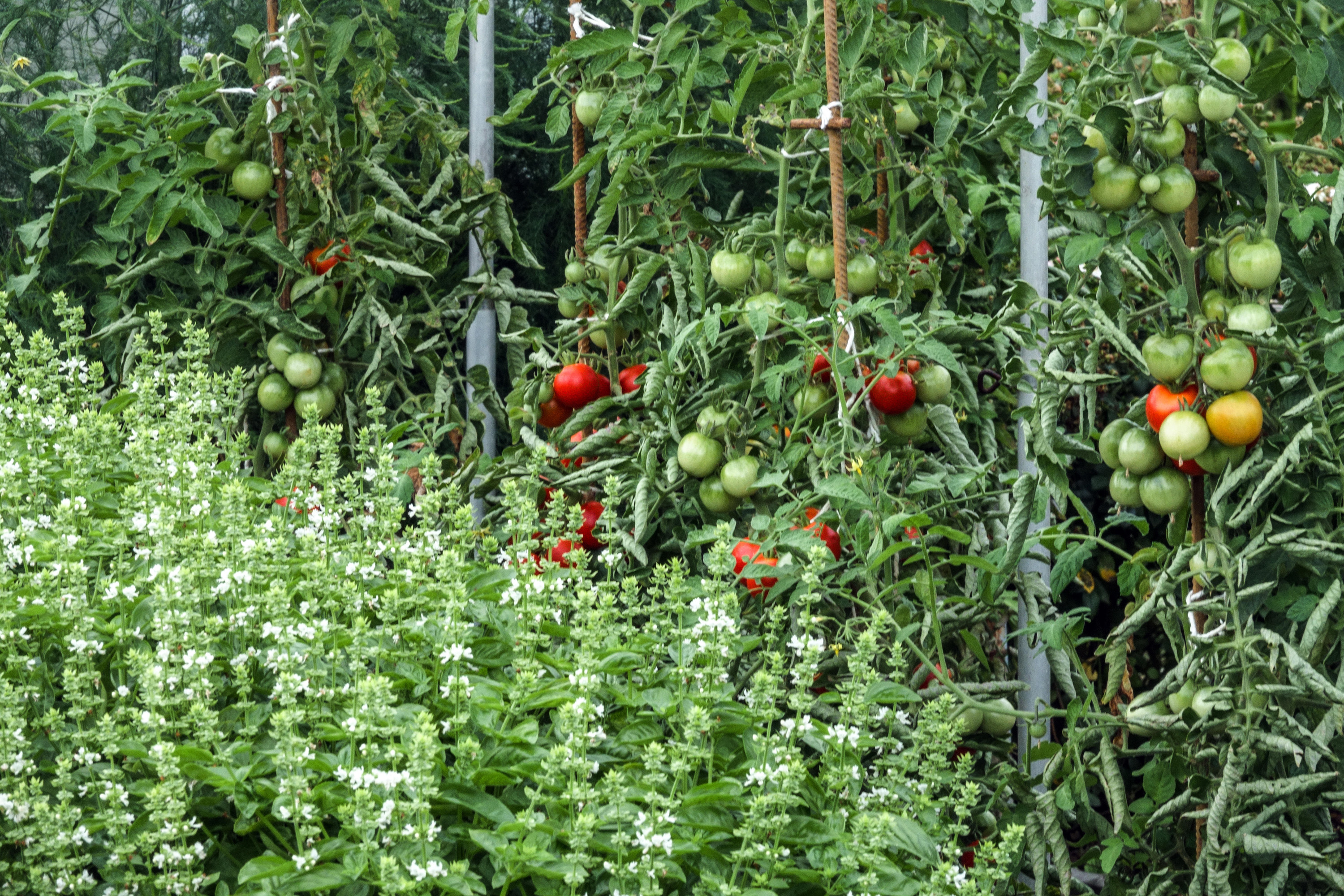
Gardeners of old were very familiar with the principle of ‘companion planting’ – growing certain plants together to help banish pests, ward off disease and therefore get bigger harvests. Many of these age-old ideas still hold true today and are ideal for organic gardening.
Strong smelling plants can be used to throw pests off the scent of precious veg crops, for example – peppery nasturtiums can help keep black fly off broad beans by attracting them towards themselves instead, while basil will not only help keep aphids off tomatoes but is also said to improve their flavor.
The herb summer savoury is a good black fly deterrent for broad beans, and if you’re reading up on how to grow carrots, interplant them with spring onions (scallions) - the onion smell can help deter carrot root fly. Use mint to keep flea beetles away from radish leaves too.
If you’re learning how to grow roses, they’ll likely to be healthier if you plant garlic cloves at their bases. Similarly, place a few French marigolds in the greenhouse and the strong smell should help keep out whitefly.
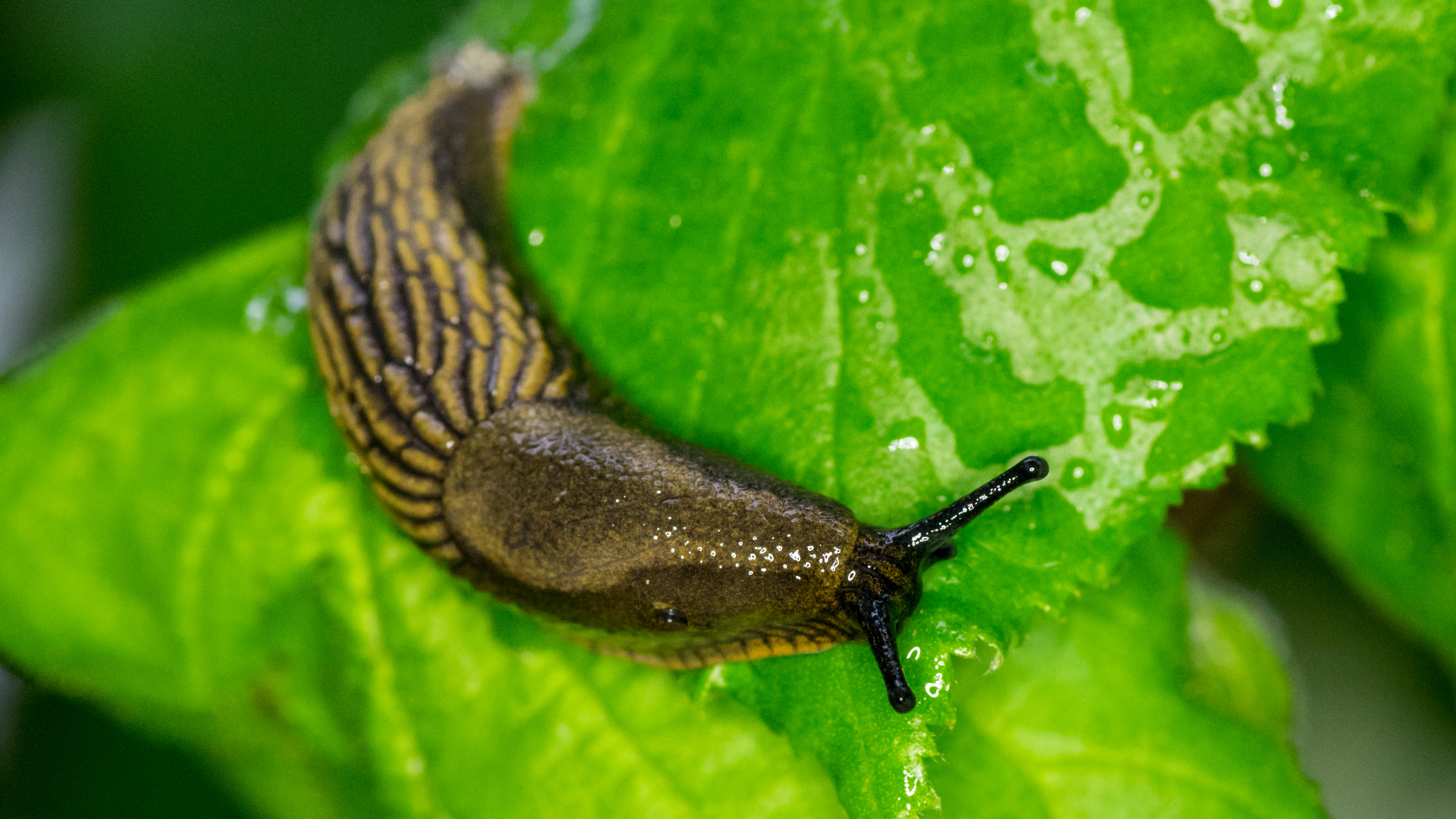
A pile of lettuce leaves left at the side of the veg patch will draw slugs away from the crops – simply remove the slugs every morning. Grow more dill and fennel plants than you need and allow a few to flower – they’ll then attract hoverflies, which in turn will help to see off aphids from all sorts of crops. And growing sweet peas near any kind of beans will attract pollinators to them.
Want to know more? Our guide to companion planting is packed with useful tips on what combinations to plant side by side.
How do I get rid of weeds in an organic garden?

Unwanted weeds compete with your plants for food and water. Instead of using weedkilling sprays, effective alternatives including hoeing, mulching (a thick protective layer spread over the soil to prevent light reaching the weeds), hand-weeding and the use of heat in the form of a specially designed flame device (from garden centers).
But the key is never to leave bare soil in your beds and borders so there’s less room for weeds to grow in the first place: pack in the plants and use a mulch such as bark, woodchip, leaf mould, cocoa shells or gravel around them. If some weeds do still get through, cut them down just as the flower buds begin to show so they don’t get the chance to seed and spread.
You can deprive weeds of even more light by organizing your planting in tiers: start with the best ground cover plants; then add medium-sized shrubs, and finish with taller shrubs, trees and the best climbing plants at the back of the border.
Head over to our guide on how to weed a garden for more advice.
Use the no dig method for organic gardening

There’s another solution to the weed problem that’s growing a huge following – many people around the word now swear by the ‘no dig’ method. The idea was promoted by Australian Esther Deans in the 1970s, and Ruth Stout advocated a similar garden mulching technique in America in the 1950s and 1960s. It’s now championed by Charles Dowding in the UK.
The idea is that rather than following the usual custom of routinely digging soil over every season, instead you simply cover it with a thick layer of garden compost or well-rotted manure as a mulch each year. This feeds the micro-organisms in the soil without disturbing them, giving you a productive garden that's much less labour intensive. And there are fewer weeds, because the seeds harbored in the soil haven’t been brought to the surface by constant digging.
‘Soil that you cover with compost is then aerated and drained by well-fed worms and other soil life,’ says Charles Dowding. ‘You are then free to concentrate on sowing, planting and harvesting: gardening becomes quick, easy and super productive.’
Check out our no dig gardening guide for more helpful hints and tips.
How do I feed my plants in an organic garden?
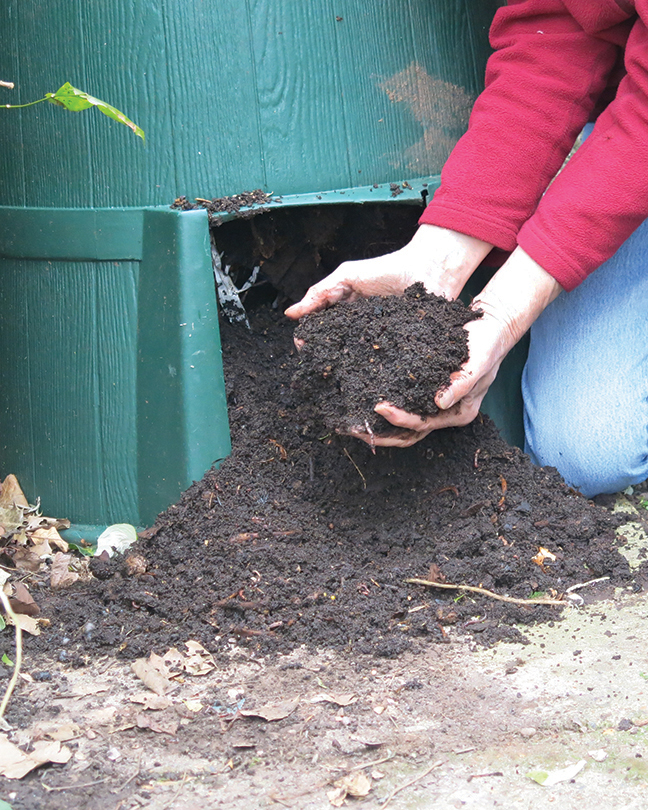
‘Plant feeding is about biology (fungi) more than chemistry (nutrients/minerals),’ explains Charles Dowding, ‘and the no dig method increases the ability of plants to find food.
'Compost mulches serve as a rapid source of food for soil organisms and enhance their activity, thus improving soil structure. Most soil already has structure for roots to grow and nutrients to feed plants, and it is full of growth-enabling organisms. Billions of fungal threads, nematodes and earthworms – to name but a few – are being helpful right under our feet. We need to help them to help us. Organisms are fed with organic matter on the surface, as in nature but faster, so allowing soil to work its magic. Roots ask fungi for food and moisture, and fungi work best when undisturbed, which is why you see stronger growth in no dig soil.’
Why shouldn’t peat be used in organic gardening?
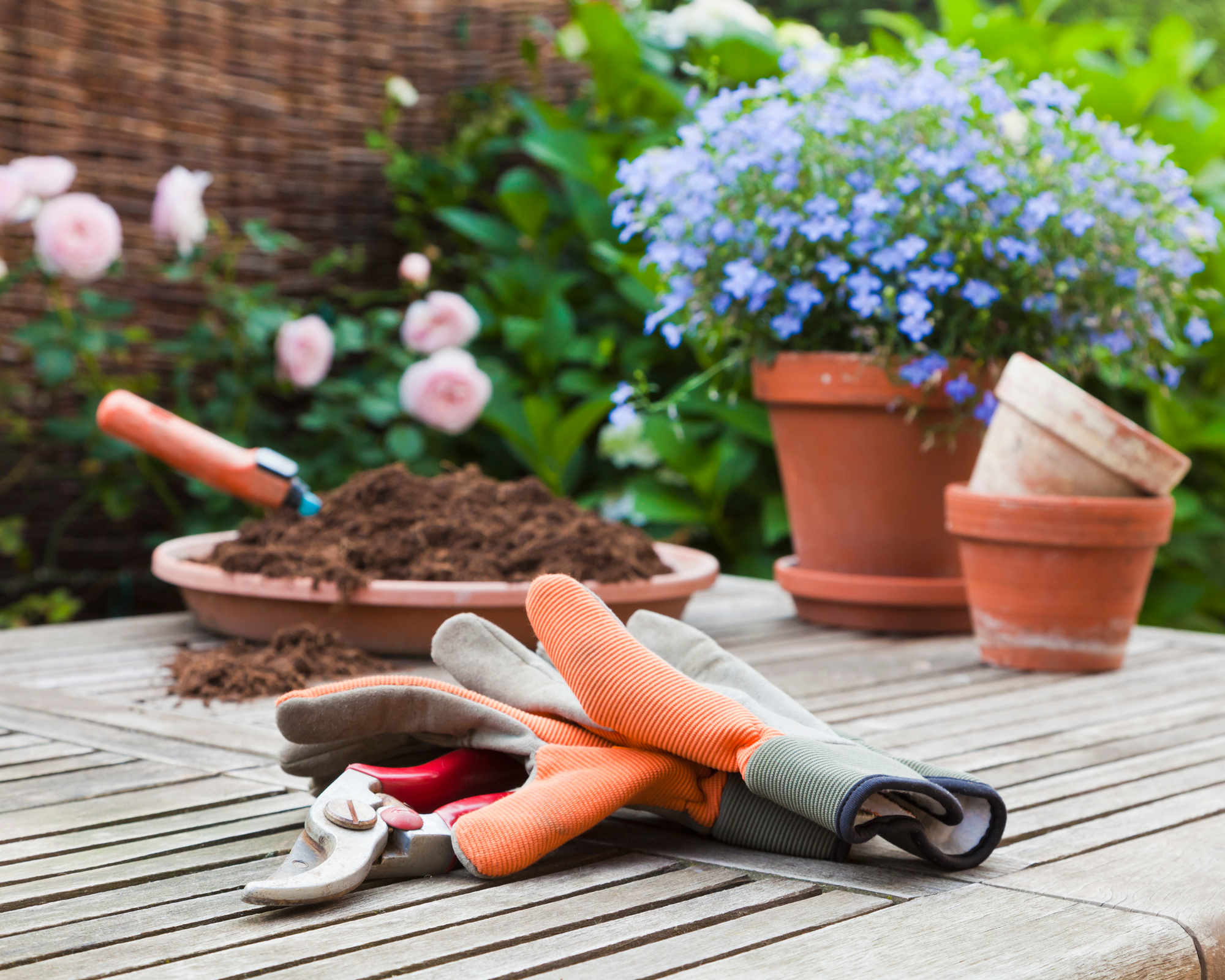
For decades, peat has been used as the main component in plant compost bought from garden centers. But to collect peat on a large industrial scale, vast swathes of lowland bogs have to be destroyed or damaged. This matters because they support many rare and endangered species of plants and wildlife and cannot be regenerated – it takes a year to create just 1mm of peat.
What’s more, peat is also the best and biggest land-based store of carbon, one of the planet’s damaging greenhouse gases – it is more efficient at this than any other eco-system, including forests. And garden plants don't need peat. There are many good peat-free composts on the market now and, in the UK, the Royal Horticultural Society (RHS) has committed to being 100% peat-free by 2025 - the charity’s four gardens are already 98% peat-free and if it works for them, it can certainly work for the average domestic gardener!
Garden Organic welcomes initiatives like this. ‘Peat has no place in the garden,’ says chief executive James Campbell. ‘For over 30 years we have campaigned against it, and our own For Peat’s Sake campaign is pushing the peat agenda up in the horticultural world. Its aim is not just to take peat out of compost and potting mixes, but also to help gardeners everywhere be peat-free and proud!’
To make your own garden compost, head over to our guide on how to compost.
6 easy steps to organic gardening

Keen to create an eco friendly garden? Try these six easy steps to start your organic gardening journey.
- Treat your soil organically, using compost or animal manure rather than artificial fertilisers.
- Choose plants suited to your site and soil.
- Grow varieties that are resistant to pests and disease, reducing the need for artificial pesticides and fungicides.
- Grow plants to encourage wildlife and therefore natural predators.
- Control pests with barriers, traps and covers.
- Recycle wherever possible (for example, by making compost and collecting rain water).

Sarah is a freelance journalist and is lucky to be able to write about her two main passions: gardening and food. She recently took on an allotment too, and is really loving growing all her own fruit and veg then bringing it home to try out in new recipes for her food and gardening blog, A Cook's Plot.
